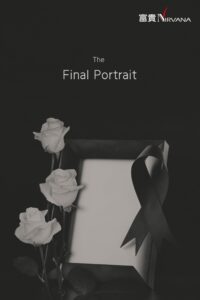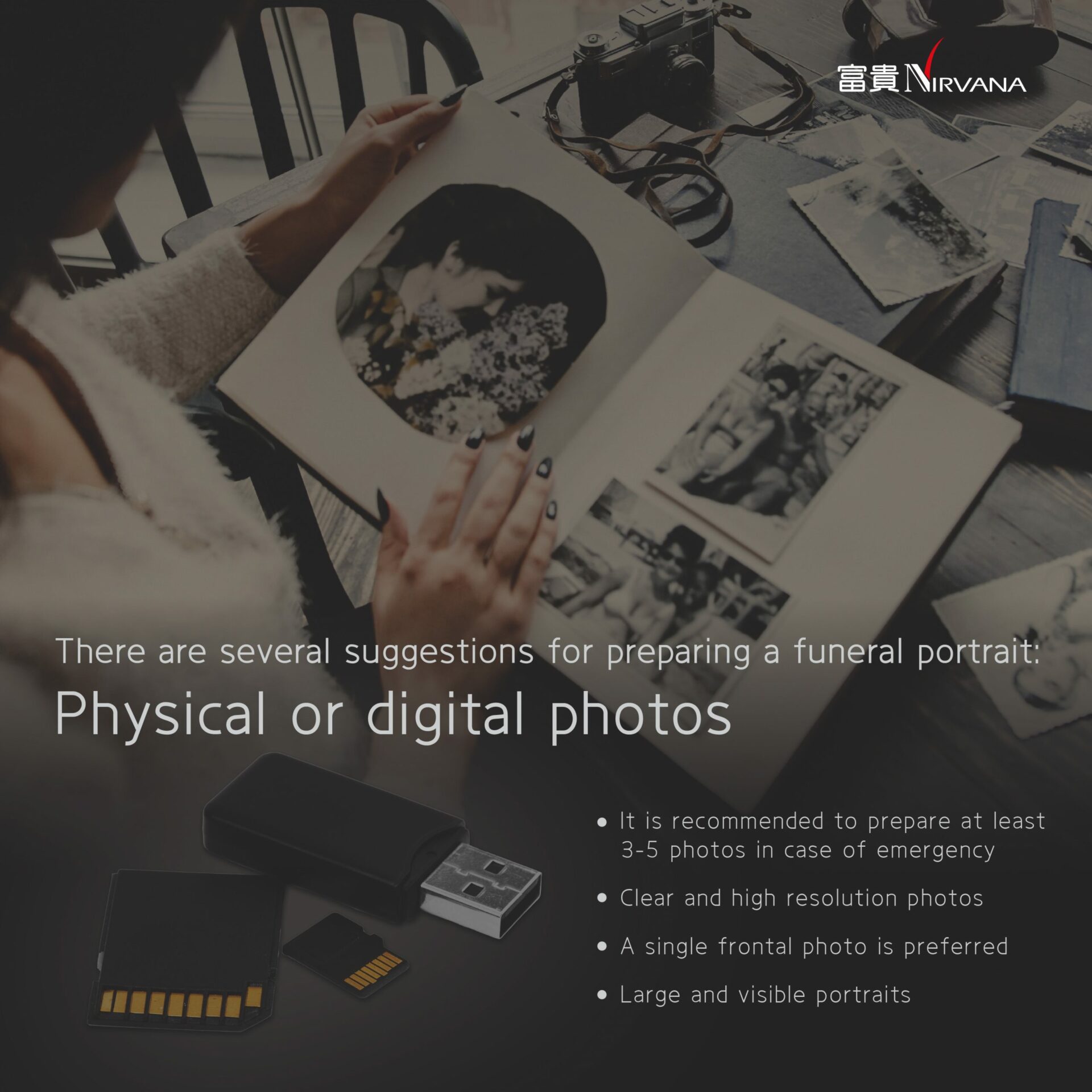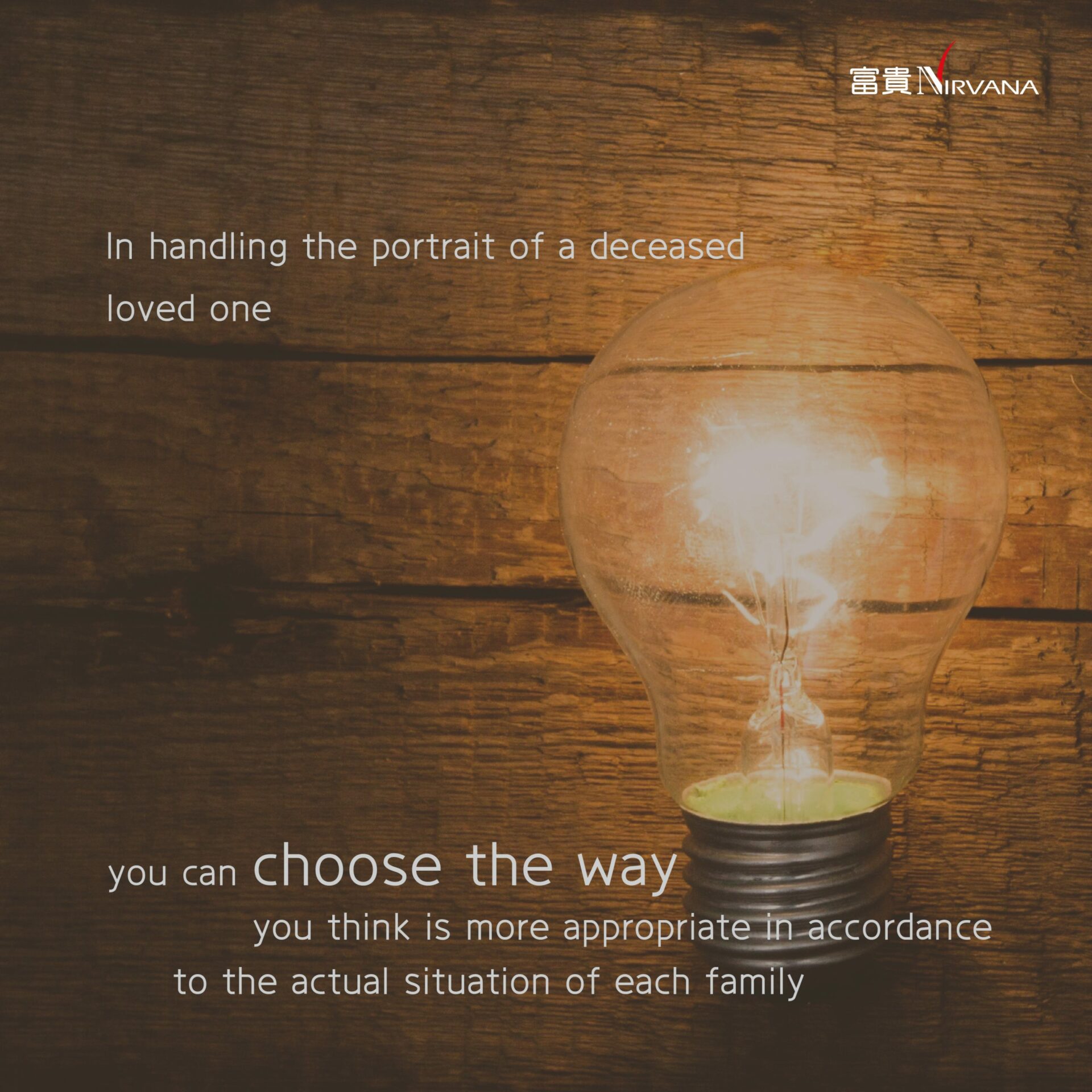Life is like a drama, and drama is like life. In the different important stages of life, we all think of recording every memorable moment for posterity with the camera. However, when it comes to the important “end point” of life, not many people take the initiative to consider leaving their self portrait behind. It usually doesn’t cross their mind that the only way people can still see them after they’re gone is through photos of them in life.

Many people tend to think they don’t need to have their pictures taken or they dislike the notion because they are too old. Later however, when the time comes to prepare for the funeral, there simply isn’t a suitable or presentable photo that can be used as a funeral portrait.
Things aren’t the same today as in the past; modern people are more liberal and can talk about their life plans openly, so it is no longer a taboo to discuss death.
Many elderly folks not only choose their final resting places and decide on the sort of funeral they want, but will also go to a photo studio to have their portrait taken to prepare a satisfactory “funeral portrait” for themselves. This practice not only allows family members to make proper arrangements for their funeral but also eliminates the need to worry about the arrangements later on.

On the topic of funeral portraits, do you know how to choose one? What are the important things to note? Can regular photos be used? What should one do with the funeral portrait after the funeral service?
The placement of the funeral portrait within the memorial parlour is not only convenient for the family and the Nirvana funeral service team to quickly identify the venue, but is also allows the family to have the feeling that their loved one is still there with them – allowing them to cherish the memory of the deceased through the photo.
The common perception of a funeral portrait is a headshot, but did you know that nowadays a normal photo taken in life can also be used for the same purpose? In the selection of a funeral portrait, you can refer to the following suggestions:
- Physical or digital photos
- It is recommended to prepare at least 3-5 photos in case of emergency
- Clear and high-resolution photos
- A single frontal photo is preferred
- Large and visible portraits

What should be done with the funeral portrait after the funeral?
After the death of a loved one, the funeral portrait often adds to the grief of those left behind. Even though they know their loved one is gone, they will still miss the person the moment they see the photo.
- According to traditional customs, the funeral portrait is collected after the funeral and not taken out and hung at home until one year after the death of a loved one.
- The portrait can be cremated along with the casket. If the portrait is not burnt at the time of the ceremony, it can be done a year later on an auspicious day.
- After the funeral service, some families place the portrait at home for a period of time to pay respects to the deceased – a practice equivalent to an enshrined ancestral tablet or deity.

The treatment of the portrait of a deceased loved one still needs to be arranged in accordance to the actual situation of each family. As long as one chooses what one considers to be a more appropriate treatment, the deceased can be put to rest and the living can be comforted.
